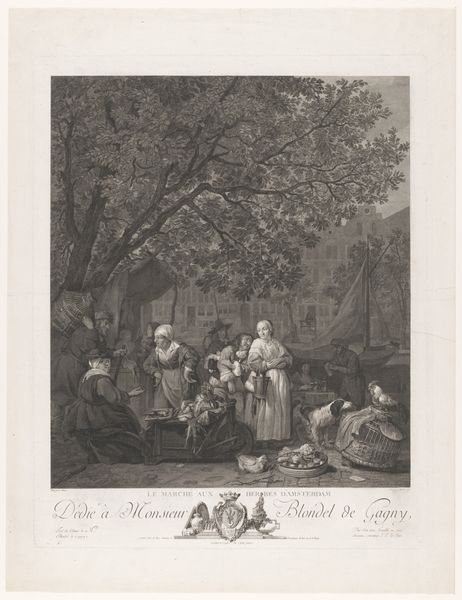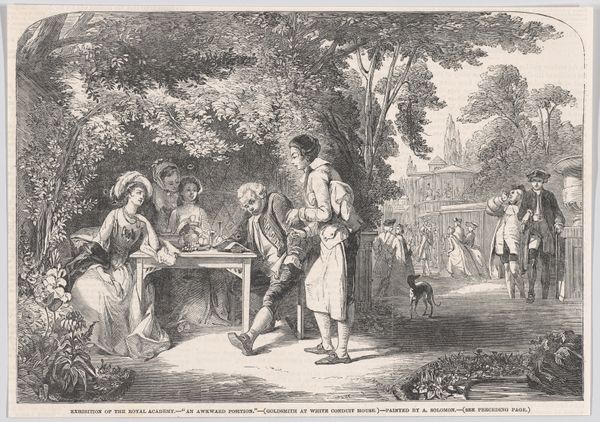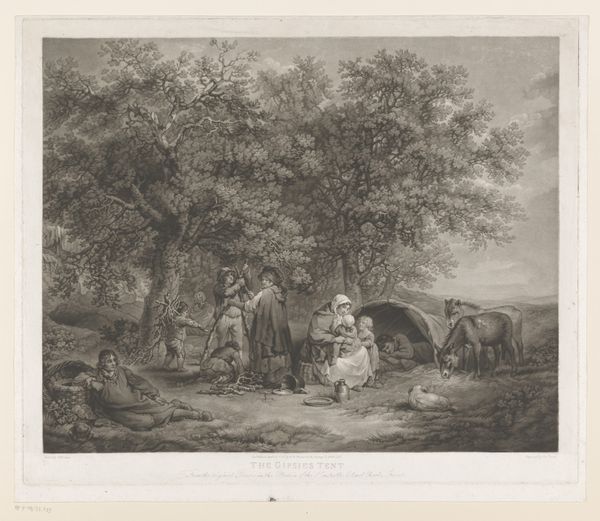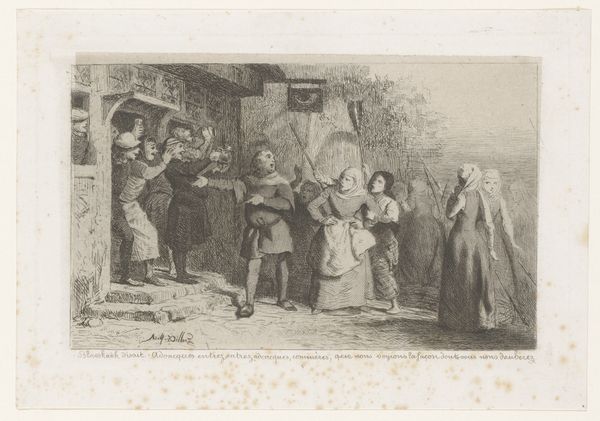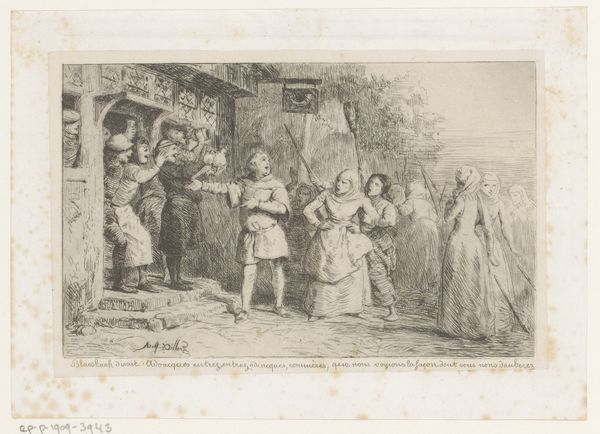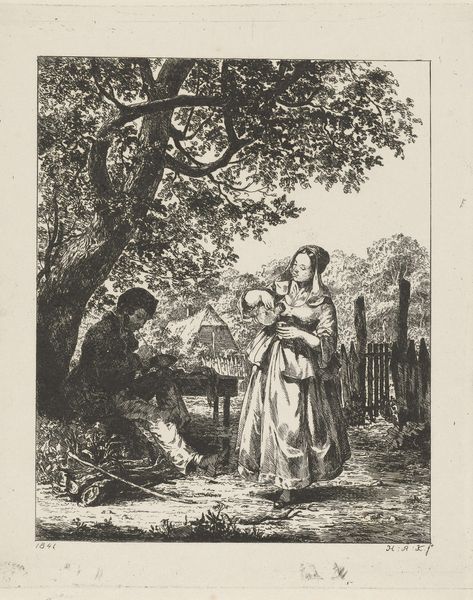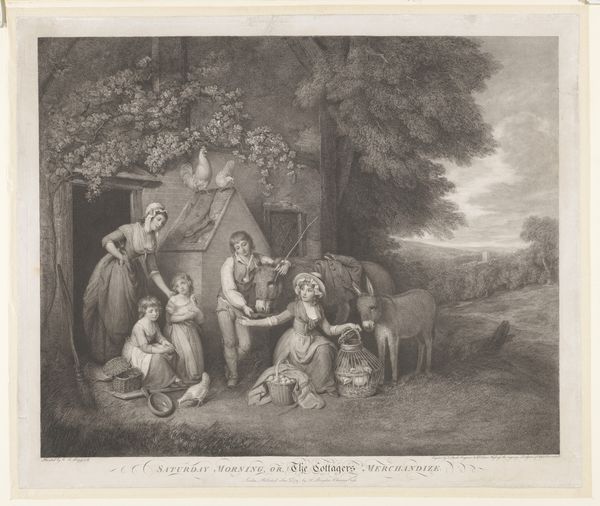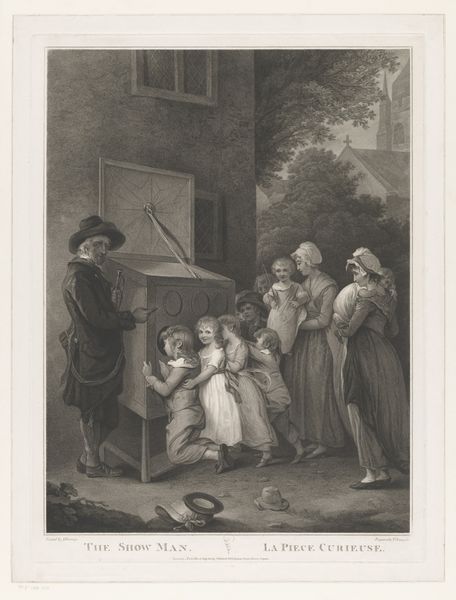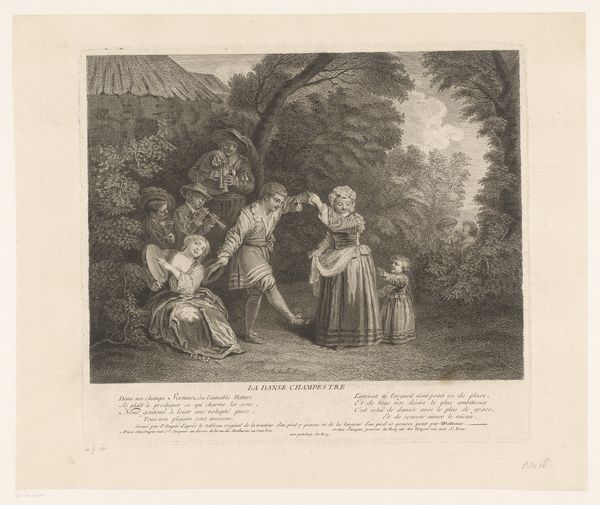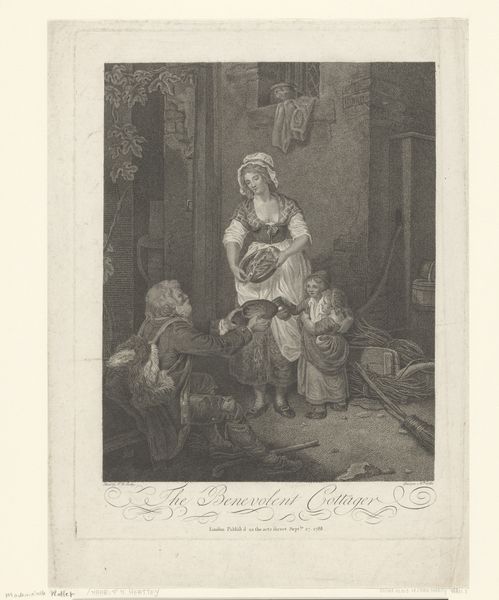
print, engraving
# print
#
landscape
#
romanticism
#
19th century
#
genre-painting
#
engraving
Dimensions: height 479 mm, width 604 mm
Copyright: Rijks Museum: Open Domain
Curator: Let's turn our attention to William Ward's print, "Family in a Countryside Retreat," created in 1796. My first impression is of carefully constructed tranquility; a scene that feels staged in its peacefulness. Editor: Indeed. There’s a sense of idyllic escape meticulously crafted into this landscape. Note the dress of the central woman, with her elaborate hairstyle--she has literally brought the court into the country! This isn't just a portrayal of family life; it speaks to a very specific, idealized vision of it for its time. The symbolism would have been deeply tied to notions of domestic virtue and social status. Curator: And how those elements play against the actual rural environment is quite telling! The feeding of the chickens, the playing children…there’s an underlying narrative about humans' harmonious relationship with nature. It suggests a Romantic yearning for simplicity, but with clear markers of refinement imposed. Editor: Precisely! The setting, the print’s overall visual language are all very much informed by broader historical currents. After the French Revolution, there was a marked increase in pastoral imagery, especially in England. People began to find comfort, nostalgia and value in the stability and continuity of rural traditions as society was experiencing major social transformations. Prints such as these had immense cultural currency. Curator: I'm interested in the enduring quality of certain themes, especially in how we continue to associate the countryside with purity and virtue. That thatched cottage as an enduring symbol…and the print makes you wonder who exactly it represents and serves. The presence of farm animals and the chicken coop alongside members of this obviously moneyed and privileged family seems pointed. It suggests more than an innocent interaction; what else might those animals tell us about labor and land? Editor: I concur. Its presentation veils something crucial. By exploring what this rural retreat is doing within this larger societal frame, we come closer to seeing how art truly holds a mirror to the world and shapes social ideas around family. Thank you for sharing your interpretations with me. Curator: My pleasure; your historical insights made me look at it with fresh eyes.
Comments
No comments
Be the first to comment and join the conversation on the ultimate creative platform.

